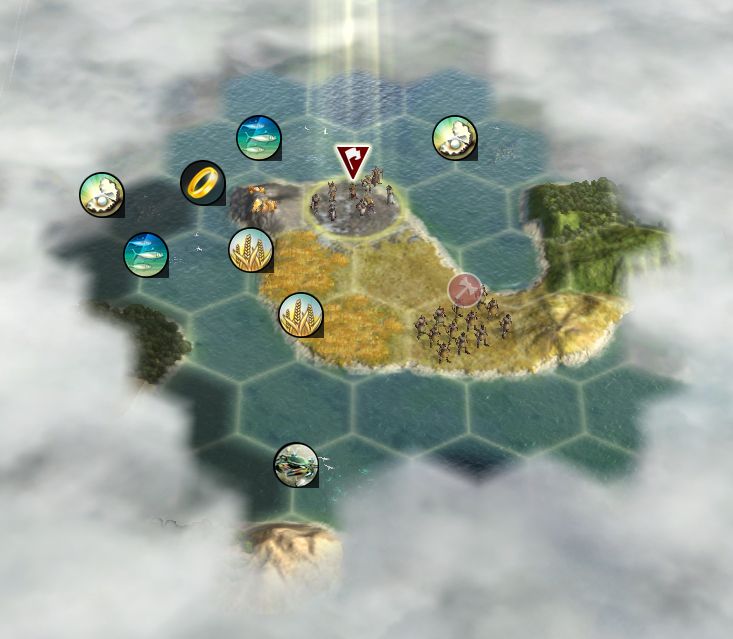
The obvious move was southeast, getting those hills closer and crab into range without giving up anything.
I went worker first. The common development path is to use Liberty for a worker and hammers for culture (monument), but that can also be flipped around, build the worker with hammers and culture with a social policy in the Tradition opener. This start and map seemed to demand Tradition more than Liberty. London would need a lot of muscle to pick up all those third ring sea resources; so much that it may never happen at all without Tradition. In fact, culture expansion in general never goes very far without that Tradition opener; like 6 tiles per city is about the limit before the cost starts escalating into hundreds of culture per tile.
My build order was worker - granary - shrine - trireme - work boat - Great Lighthouse, also purchasing a second work boat along the way. Tech went Pottery, Mining, then directly to Sailing and Optics for the GL. Social policies were the Tradition opener on T25, Legalism on T33, Landed Elite on T41, Monarchy on T54.
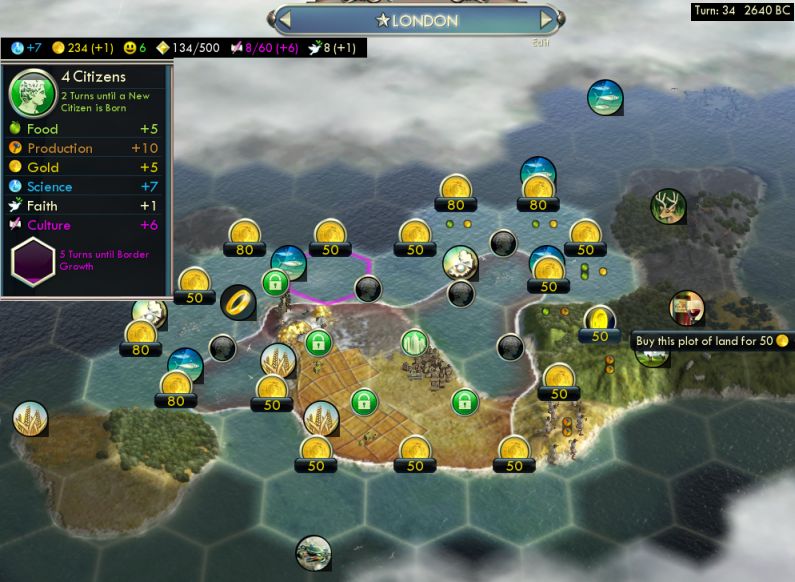
Since the Great Lighthouse would need hammer power and the culture picker hates rough terrain, I had to buy a hill tile. The correct hill is the indicated one, which brings access to the sheep out in third ring too.

At this time, thanks to a religious city-state and my shrine, came my Pantheon pick. Of course there is only one possible way to go on an islands map.
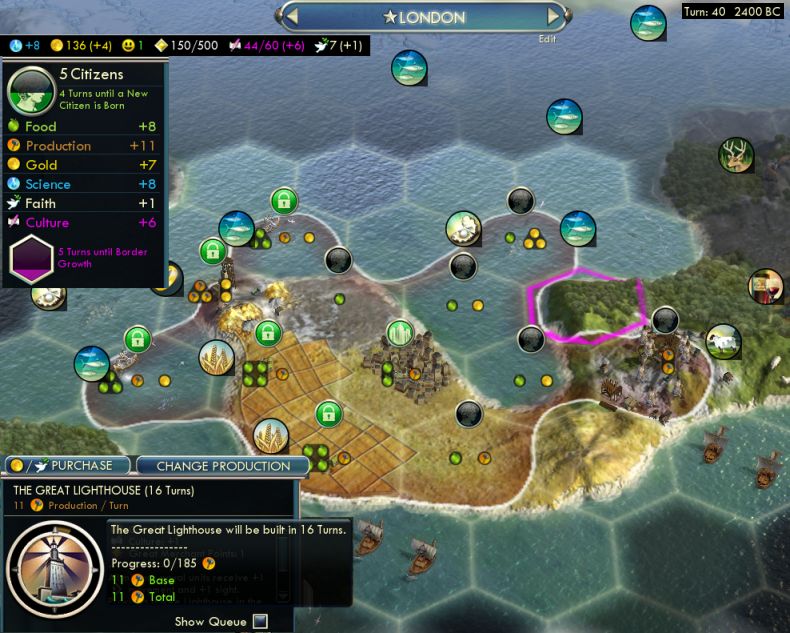
And here we are starting the Great Lighthouse. On turn 40, at 11 hpt, plus 10 overflow from the previous build, plus adding that mined hill in three turns, plus a forest chop once London acquired that forest hill. (Very oddly, the culture picker took that doubly-rough terrain ahead of the sheep out in third ring. This definitely seems to be a change in G&K, that the culture picker prioritizes almost all second-ring tiles ahead of almost all third-ring. I'm not sure I like that; I like placing cities to use the full length of their reach, but third-ring tiles now take an extremely long time to acquire.)
That was finally enough - this was my third map trying to get the GL - and it completed on turn 51.

My starting warrior had gone out exploring the moment Optics hit for embarkation, followed somewhat later by a scout. They collected something like twenty ancient ruins in all, accumulating lots of gold, one for a chunky +60 faith, about six for culture, assorted maps, popped Masonry, Archery, and one for survivors that took London from size 12 to 13 (that's +130 food!)
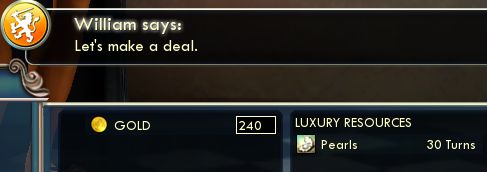
One thing I did with that gold was purchase a work boat for the pearls resource -- and then turn around and sell the pearls for exactly what the work boat cost. So there's a completely free addition to the snowball. I'm illustrating here that I've decided not to follow the RB variant rule against taking gold from AIs. It is part and parcel of the game; Firaxis had every chance to eliminate or smarten up that behavior in Gods & Kings, and did not shy away from revamping other subsystems. Taking money from the AIs is by design a tool for the player and it's silly to cripple yourself by taking that off the table.
I bought a religious city state with help from the quest that gold gifts are more effective, which got the faith counter rolling. My Prophet arrived for a religion in 1000 BC. I was the first civ to get there - and it didn't even take any actual building of faith, just the one ruin for 60 and the religious CS.
Unlike God of the Sea, there didn't seem to be much of anything in the belief lists that would help a dispersed naval empire. Anything relying on foreign spread was junk, it'd be hard enough just to spread the religion to my own cities too far apart for natural pressure. I went with Pagodas, since happiness might be a problem, and they just work by buying the building even if the religion doesn't do much else. For the founder belief, I guessed Tithe (+1 gold per 4 followers) was the best of the weak bunch; it'd pay out decently in the home cities here from the start.
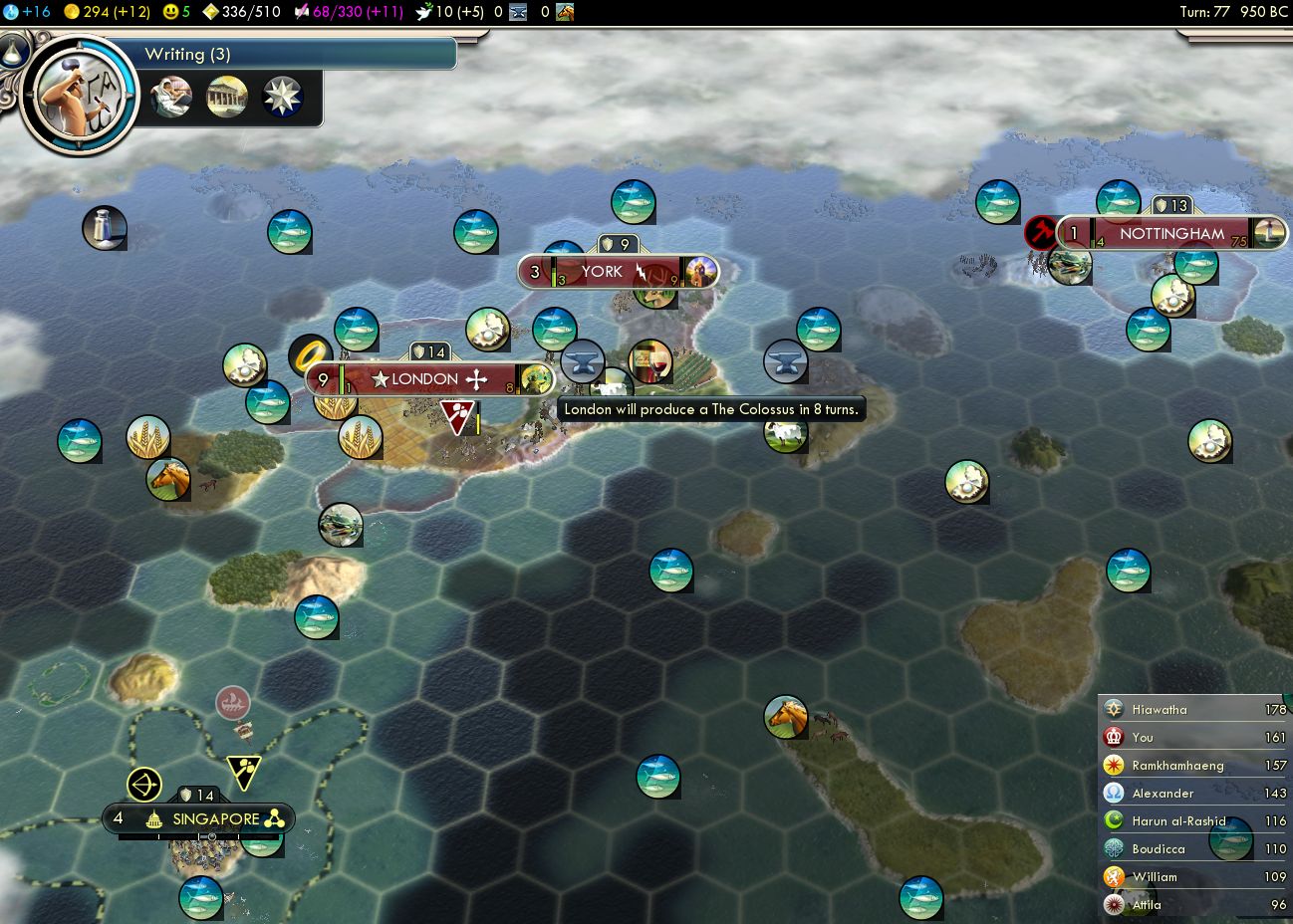
After the Great Lighthouse, London put out two settlers, so here's an overview as London adds the Colossus. I might have hit some bad timing in that my religion was founded right before Nottingham was. That meant (I think) that my Pantheon did not come for free in Nottingham and that it would have to wait for missionary spread. (This was a serious hit, missing out on probably 100 hammers from God of the Sea until the missionary could emerge and arrive.)
However, I really REALLY like one detail of the naval mechanics here. It seems that embarked units can survive one hit from a barbarian galley - and not just combat units, but also embarked workers and settlers. That's pretty nice and reduces the chance of losing a big bunch of hammers to capricious exploring. Although I got used to that and didn't realize that work boats are still defenseless, and got one killed. That's somewhat odd: for noncombat units at sea, a LAND unit defends better than a SEA unit.
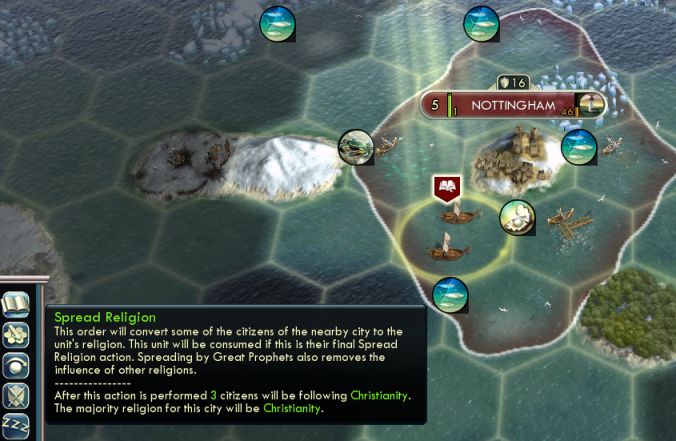
This is also a good naval mechanic and good to know: Seaborne missionaries can spread right from the water.
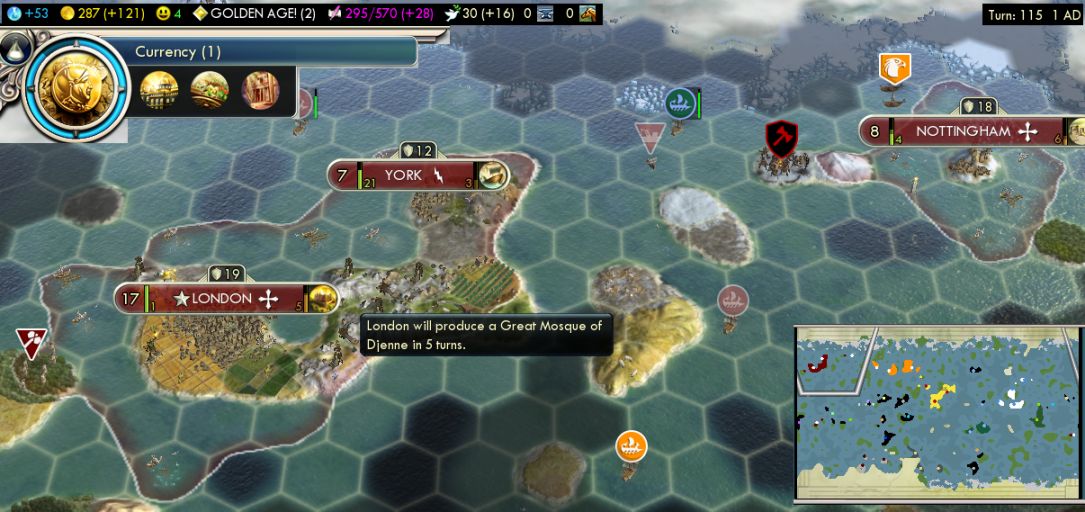
By the way, I had one-more-turned my way through the entire game from the start to this point. I didn't even get up from my chair for over five hours, going from a late breakfast until I was sitting in darkness after sunset and had never stood up to turn on the light. Civ 5 can still do that to me, especially as I found this game to be very enjoyable indeed. The islands map dismissed one of the major pain points about Civ 5, the cramped and traffic-clogged nature of land tactics. On the sea, any unit can freely float anywhere it damn well pleases with plenty of room. The ancient ruins in particular had me one-more-turning, as triremes would discover them and I'd plan out routes several turns ahead for land units to go collect them, holding all that in my head and unable to interrupt the game at all. It reminded me quite a lot of playing the Pirates faction in Alpha Centauri, complete with picking up tons of supply pods.